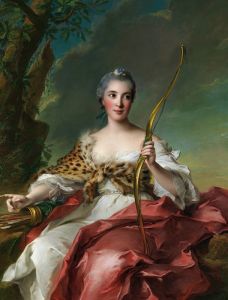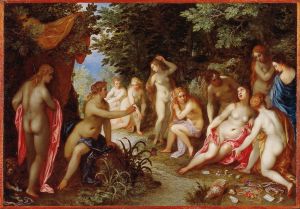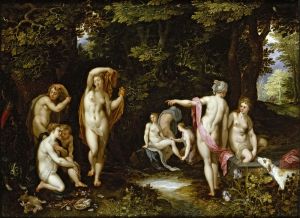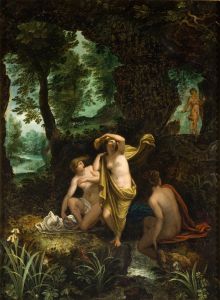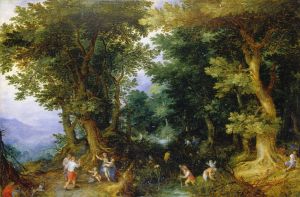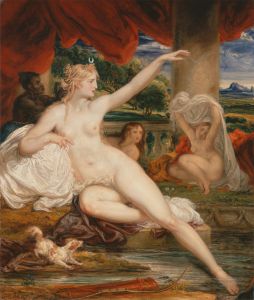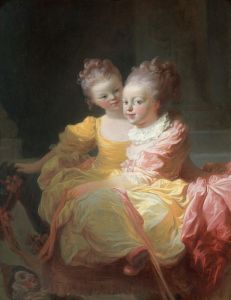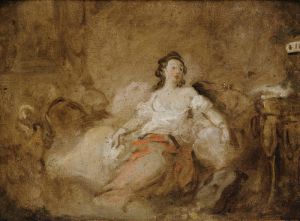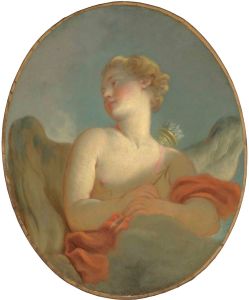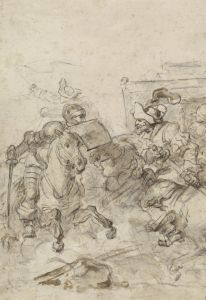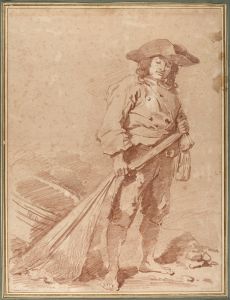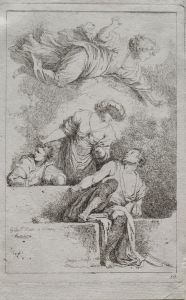
Diana and Endymion
A hand-painted replica of Jean-Honoré Fragonard’s masterpiece Diana and Endymion, meticulously crafted by professional artists to capture the true essence of the original. Each piece is created with museum-quality canvas and rare mineral pigments, carefully painted by experienced artists with delicate brushstrokes and rich, layered colors to perfectly recreate the texture of the original artwork. Unlike machine-printed reproductions, this hand-painted version brings the painting to life, infused with the artist’s emotions and skill in every stroke. Whether for personal collection or home decoration, it instantly elevates the artistic atmosphere of any space.
Jean-Honoré Fragonard's "Diana and Endymion" is a notable work by the French Rococo painter, who is celebrated for his exuberant and hedonistic style. Fragonard, born in 1732, was a prolific artist whose works often depicted scenes of romance, mythology, and playful eroticism, aligning with the Rococo movement's emphasis on lightness and elegance.
"Diana and Endymion" draws upon the rich tapestry of classical mythology, a common source of inspiration for artists of the Rococo period. The painting illustrates the myth of Diana, the Roman goddess of the hunt, the moon, and nature, and Endymion, a handsome shepherd or hunter. According to myth, Diana fell in love with Endymion, who was granted eternal youth and immortality by Zeus, albeit in a perpetual slumber. This myth has been a popular subject in art and literature, symbolizing the intersection of divine love and mortal beauty.
Fragonard's interpretation of this myth is characterized by his signature style, which includes soft, flowing lines, a pastel color palette, and a sense of movement and sensuality. The painting likely captures a moment of tender interaction between the goddess and the sleeping Endymion, emphasizing themes of love, desire, and the ethereal nature of dreams. Fragonard's ability to convey emotion and narrative through his brushwork and composition is evident in this work, as in many of his other mythological and genre paintings.
The Rococo period, during which Fragonard was active, was marked by a departure from the grandeur and strict formality of the Baroque era. Instead, Rococo art embraced a more playful, ornate, and intimate aesthetic. Fragonard's work, including "Diana and Endymion," exemplifies these qualities through its delicate attention to detail, use of light and shadow, and the portrayal of idyllic, often fantastical scenes.
While specific details about the creation and provenance of "Diana and Endymion" are not extensively documented, Fragonard's oeuvre is well-regarded for its contribution to the Rococo style and its influence on subsequent generations of artists. His works are housed in numerous prestigious collections worldwide, including the Louvre in Paris and the Frick Collection in New York, though the exact location of "Diana and Endymion" may vary as artworks are often loaned or moved between institutions.
Fragonard's legacy as a master of the Rococo style is firmly established, and his paintings continue to be studied and admired for their technical skill, imaginative compositions, and the way they capture the spirit of an era that celebrated beauty and pleasure. "Diana and Endymion," like many of his works, invites viewers into a world where myth and reality intertwine, offering a glimpse into the timeless allure of classical stories rendered through the lens of 18th-century French art.





